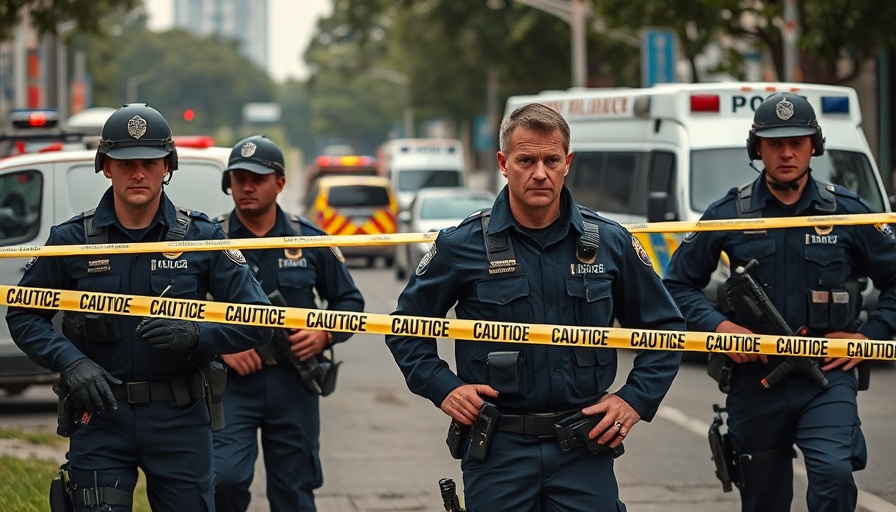
A Fatal Incident at the GOP Convention: A Look Back
In July 2024, the Republican National Convention unfolded in Milwaukee, surrounded by significant security measures aimed at ensuring safety. However, the event took a tragic turn when a fatal shooting occurred, leading to public outcry and scrutiny of law enforcement practices. This incident raised pressing questions about police actions, accountability, and the dynamics of law enforcement in high-tension scenarios.
Wisconsin’s Legal Findings: Clarity Amid Controversy
On May 10, 2025, the Milwaukee County District Attorney Kent Lovern concluded that the officers involved in the shooting were justified in their actions. In his letter to Columbus Division of Police Chief Elane Bryant, Lovern articulated that the officers had acted within their legal rights to use deadly force when faced with the imminent threat posed by 43-year-old Samuel Sharpe.
According to police reports, Sharpe approached another man wielding two knives, seemingly threatening. Body camera footage captured officers repeatedly instructing Sharpe to drop his weapons before the shooting commenced. When he did not comply and lunged toward the threatened individual, the officers opened fire, believing it was necessary to prevent serious harm.
The Role of Body Cameras in Enhancing Police Accountability
This incident exemplifies the crucial role of body-worn cameras (BWCs) in modern policing. Not only do BWCs serve as tools for documenting interactions, they also provide important insights into police behavior and decision-making. In this case, the footage played a pivotal role in the investigation, offering clarity in a situation fraught with complexity. The use of such technology fosters transparency, while simultaneously holding law enforcement accountable for their actions.
Community Reactions: Navigating Trust and Accountability
The decision to clear the officers of wrongdoing ignited a debate within the community, particularly in neighborhoods surrounding the shooting site. Citizens questioned how officers from out of state could engage in a fatal shooting during an event that was ostensibly supervised for safety. This incident illustrates the broader challenges faced by law enforcement regarding community relations.
A pivotal concern is how communities can foster trust, especially in circumstances where contentious events bring heightened scrutiny. It is imperative to cultivate open channels of communication between law enforcement agencies and the communities they serve to enhance transparency and trust.
Future Predictive Trends in Police Training and Equipment
As police departments strive to mitigate incidents similar to the one near the GOP convention, a renewed focus on training and equipment becomes paramount. Law enforcement leaders are increasingly advocating for comprehensive training that emphasizes de-escalation techniques and community engagement. Moreover, considering advancements in policing technology, such as predictive analytics and AI tools, can enhance operational efficiency and situational assessment during critical incidents.
Policy Implications: The Ongoing Debate on Police Use of Force
In light of incidents like the fatal shooting involving Sharpe, the conversation surrounding police use of force policies is likely to evolve. Policymakers, researchers, and practitioners must engage in dialogue aimed at refining these policies to balance officer safety with community protection effectively.
The outcomes of this high-profile case could lead to calls for reforms in law enforcement procedures, including enhanced accountability measures and community-based oversight.
Conclusion: A Call for Continued Dialogue and Reform
The lapses and incidents that occur during significant events like the Republican National Convention serve as reminders of the fragile state of police-community relations. As discussions around police accountability and reform continue, it is crucial for all stakeholders to engage in meaningful dialogue that prioritizes transparency, safety, and community well-being.
By addressing these complex issues, we can pave the way for improved policing practices that uphold both officer safety and community trust.
 Add Row
Add Row  Add
Add 

 Add Element
Add Element 




Write A Comment